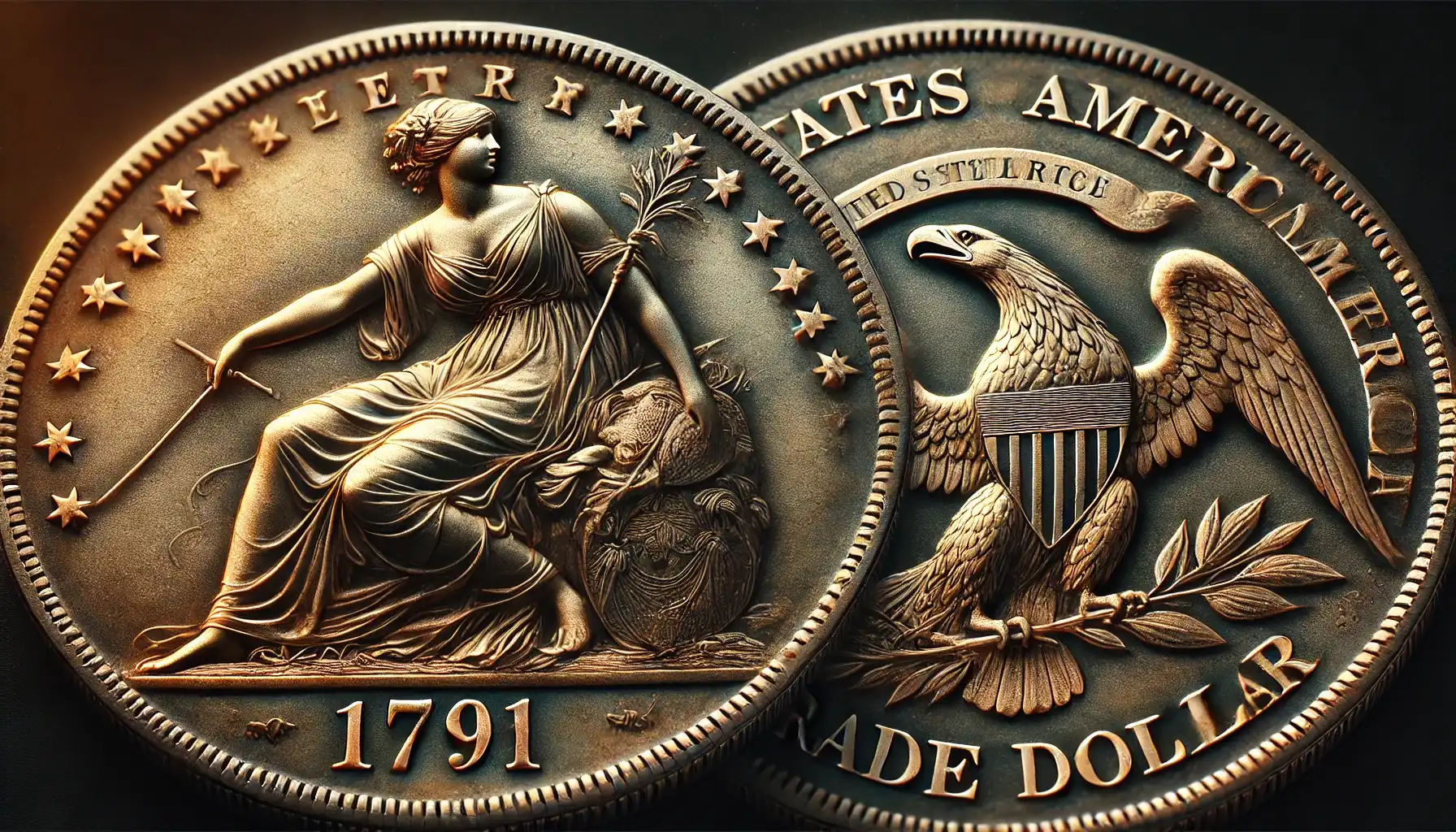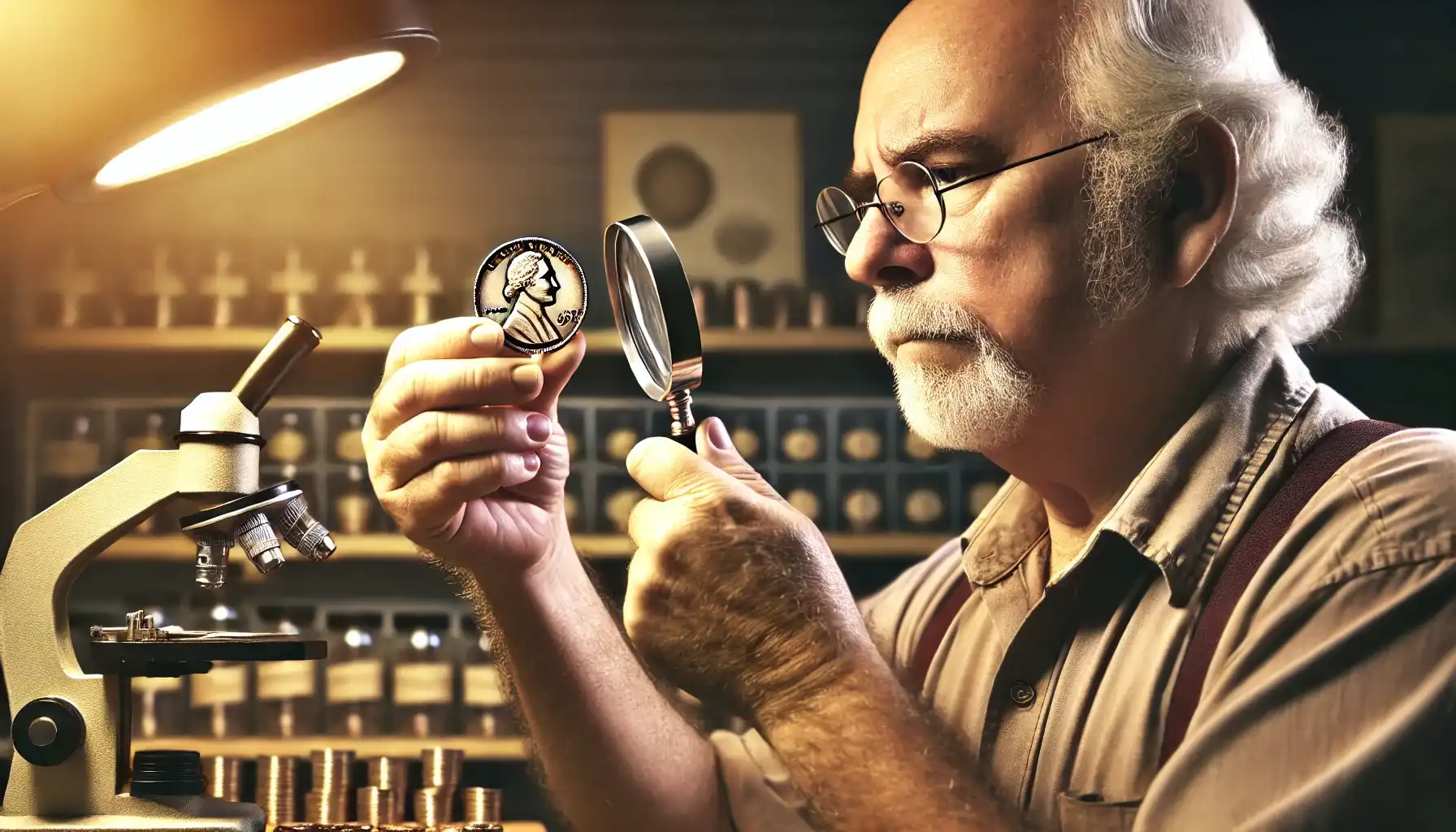Contents:
What’s the value of a coin? Is it simply the metal from which it’s made, or is there something more—a hidden story that is waiting to be discovered?
For collectors, the 1791 US Trade Dollar is not an artifact of currency. But what makes it so coveted in numismatic circles, and why does it spark such fervor among permanent collectors?
The Very Beginning
A 1791 U.S. Trade Dollar does not exist as a coin type. However, the Trade Dollar was a type of U.S. silver piece (you may confuse it with a 1791 silver dollar) that was authorized by the U.S. government in 1873 for use in trade with China and other Asian markets, not in 1791.
The 1791 period falls much earlier, during the early years of the U.S. minting history, when the first ones, like the Flowing Hair dollar, were being produced.
The real one was created due to the need for a specific coinage to facilitate trade with China, where silver was the primary form of currency (you’ll not find the 1791 silver Trade Dollar value because of this). The coin had a higher silver content than other U.S. silver ones at the time and was made to be acceptable in international markets, particularly in China. It was minted from 1873 until 1885, though it continued to circulate unofficially for years after that.

Why 1791 then for fantasies? What makes this year so important in the world of numismatics? It was a time when America was establishing itself as a new economic power that wanted to strengthen its position in international trade, especially with nations in the East.
The 1791 trade coin fantasy (you may google it as the 1791 Trade Dollar 420 grains 900 fine value) has significance beyond its monetary value. It represents:
American economic ambitions during the 18th century.
Global trade in silver, which was highly prized by nations like China (although the coin itself is made out of iron).
Diplomatic efforts, as pieces like this were designed to be widely accepted in foreign markets just like other circulated coins that are valuable today.
The Rarity Factor: Is It Worth the Hype?
When you think of rare pieces, does the 1791 trade one come to mind? It should, even though it’s a hobby coin. Few are as elusive as this one. The 1791 Trade Dollar value may skyrocket over time because of its limited availability. But what is it that makes it so rare even though it’s an obvious fake one?
Limited Pieces: Not a big number of Trade Dollar 1791 coins were produced, so they are rather hard to find today.
International Circulation: Many of them were probably lost or melted down in foreign lands. This reduced the number that remained in existence. Moreover, some people throw them away if they understand that a coin is not real.
How much is a 1791 dollar coin worth? As it is just a replica or fantasy one, it holds value primarily as a collector's novelty rather than as an authentic historical piece. The actual 1791 Trade Dollar coin value can differ and depend on the specific design, material, and condition, but most trade for under $100 in online marketplaces.

Our bonus for you! If you're looking for official U.S. Trade Dollars that were minted from 1873 to 1885, those ones can be very valuable. The prices can range from a few hundred to several thousand dollars.
Year | Mint Mark | F ($) | VF ($) | EF ($) | Uncirculated ($) |
1873 | CC | 350 | 500 | 1200 | 3000 |
1874 | S | 200 | 300 | 700 | 2500 |
1875 | CC | 500 | 800 | 1800 | 4000 |
1876 | S | 200 | 350 | 750 | 2800 |
1877 | CC | 450 | 650 | 1400 | 5000 |
1878 | S | 140 | 200 | 300 | 1000 |
1879 | P | 900 | 1500 | 2500 | 4500 |
1880 | P | 1000 | 1600 | 2600 | 5000 |
1881 | P | 900 | 1500 | 2500 | 4800 |
1882 | P | 1000 | 1600 | 2600 | 5200 |
1883 | P | 1100 | 1700 | 2700 | 5500 |
1884 | P | 2000 | 3500 | 5000 | 10000 |
1885 | P | 3000 | 5000 | 8000 | 15000 |
Disclaimer: The values indicated in the table are approximate and are based on the statistical data. However, the actual price may differ due to certain factors. Check coin value on market places and in apps.
About the Design
The obverse features Lady Liberty—a symbol of the country’s values of freedom and opportunity. But what story does the reverse tell? With engravings symbolizing trade and commerce, this design reflects America’s ambitions to engage in global markets.
Its design incorporates:
Lady Liberty: A timeless symbol of American freedom.
Eagle: Represents strength and the nation’s aspirations.
Stars and Stripes: Emphasizes the unity of the fledgling United States.
Mint Mark: Indicates the origin and authenticity.
Coins like this one can be even compared with rare 1975 and 1982 Dimes, as they offer something really strong and interesting even being a fantasy one.

Is It a Dream of Numismatists?
In summary, the fantasy 1791 dollar coin value represents:
American ambition on the global stage.
Rarity and scarcity, which continue to drive its value.
Interesting plot that makes it a desirable one for many serious numismatists.



